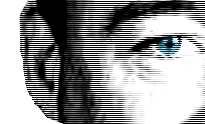Can Canadian Liberalism survive? Is the party over?
The times are clearly dire, for Canadian Grits. One need only to survey newspaper opinion pages to know this is so.
“(There has been) a new round of media and public speculation about the imminent collapse of Canadian Liberalism,” wrote one respected analyst in the National Post. “The Liberal party (is) dying … the future (will) reveal Canadian national politics as a two-party struggle between the Conservatives and the NDP,” the Post declares in another column.
A Montreal Gazette opinion writer is similarly gloomy. The Liberal Party of Canada is buffeted by “alternate attacks of political depression and paranoia,” he intones. The Liberal brand is “under siege,” it is suggested. The future is in doubt.
“(Liberals are) likely to undergo further factional fighting as prospective contenders try to build support for their future leadership runs,” declares a Maclean’s cover story. Liberals are “essentially rudderless,” yet another Post columnist writes. “(The Grits) failed to modernize and reposition the Liberal party.”
The columnist quotes a former national director of the Liberals: “The Liberals didn’t know where they were going, and still don’t.” And so on, and so on. Everywhere you look, it seems, the story is the same.
The assessments of Liberal fortunes are similarly dire. With the federal Liberals in third place and seeking new leadership — and with the Ontario and Quebec Liberal parties effectively leaderless, and facing the prospect of being out of power for a long time to come, perhaps indefinitely — the Liberal party brand seems to be “dying,” as the Post columnist wrote.
Not quite.
The first round of quotes, above, were taken from Canadian newspapers from the year 1985, shortly after the federal party’s drubbing in the September 1984 federal election. The other quotes come later, in and around 1989 and 1990, when the party again lost to the Conservative machine of Brian Mulroney. The names, and tenses, have been altered to protect the mistaken.
In the years that shortly followed, the Conservative party was reduced to two seats, and the Liberal Party of Canada commenced an extraordinary hat trick of majorities. In Ontario and Quebec, too, Jean Charest and Dalton McGuinty would go on to lead their respective parties to decades-long runs in power.
Liberals are used to this. My former boss, Jean Chretien, laughs at the suggestion that the Liberal party brand is toast. “I wallpaper my house with these damn obituaries,” he said this week, drawing attention to a series of polls from around 2001, when the nascent sponsorship affair was — if you believe the columnists back then, too — killing the Liberal brand.
But despite getting it wrong in the mid-’80s, the late ’80s, and a decade ago, the crepe-hangers are back at it. The Liberals are gallows-bound, they insist. They were wrong before, and they are wrong now. In a country as big and as diverse as this one, one-size-fits-all political ideology — as favoured by the Conservatives and the NDP — doesn’t work. Canada, and Canadians, swing left and right, as the circumstances warrant. Only one party has the ability to do both without repudiating its essence.
Here’s a prediction: The historic concurrence of three leadership races — for the three largest Liberal parties, federally and in Quebec and Ontario — will do what leadership races always do: They will create a surge in support. In Quebec and Ontario, where minority governments exist, that swell in popularity will lead to elections shortly thereafter. Liberals will have excellent chances at winning those elections.
Federally, the election is further away. But the prospects are the same: The Liberal brand — now declared to be dead — will rebound dramatically.
And if you don’t believe me, read some old newspaper clippings. In yesterday’s headlines are today’s.

